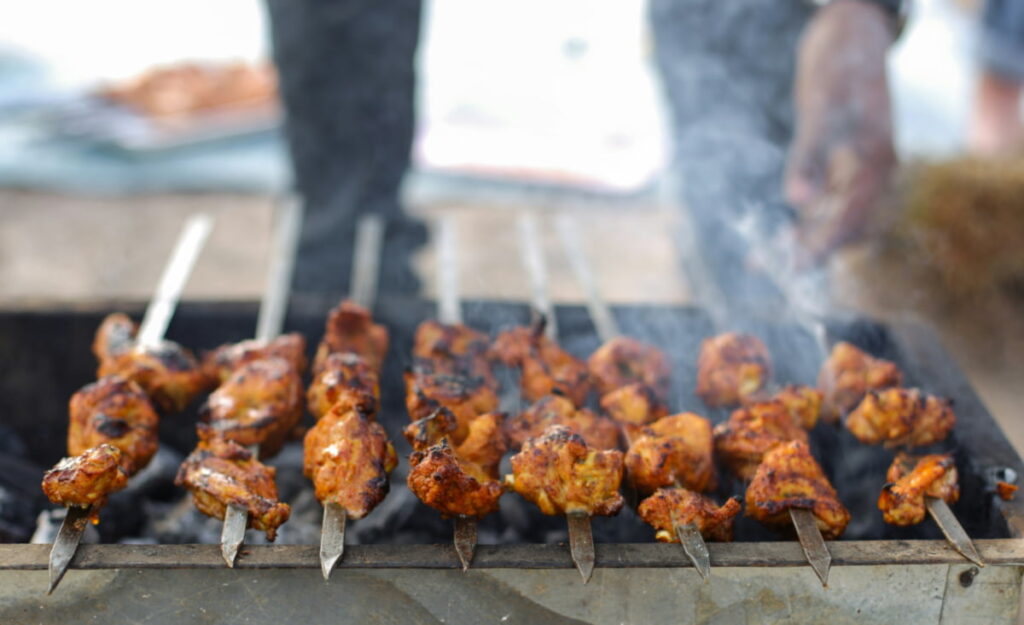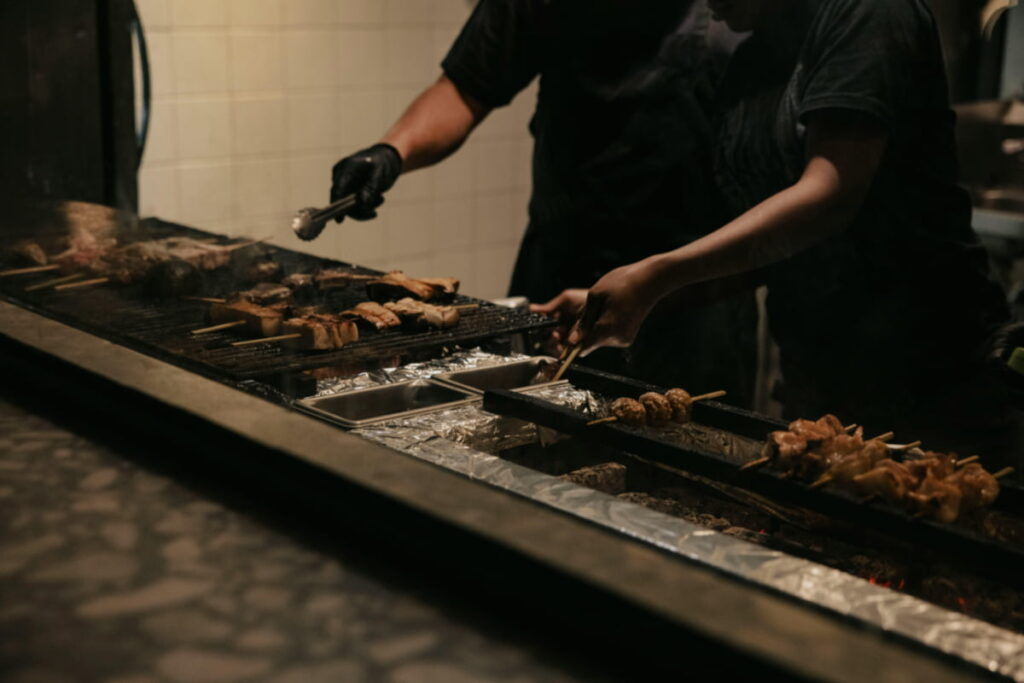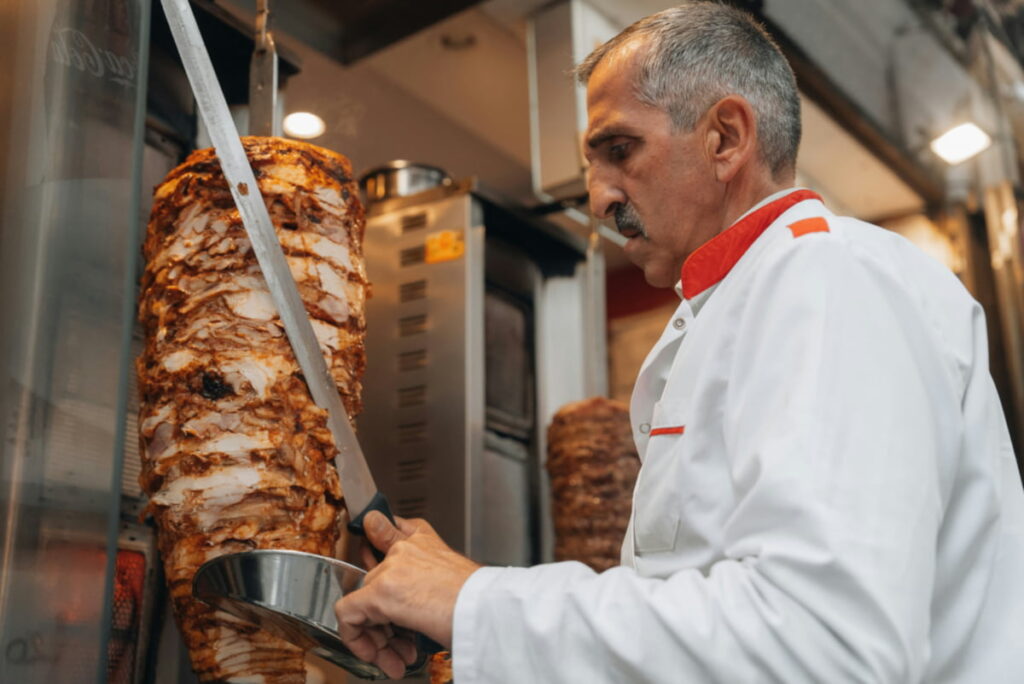
Want to reheat kebabs without ruining them?
You’re in the right place.
Here’s the deal: reheating kebabs the wrong way is a one-way ticket to bland, rubbery meat. But when you do it the right way? You’ll bring those flavors back like it’s fresh off the grill.
In this guide, I’m going to show you exactly how to reheat kebabs so they’re juicy, flavorful, and 100% safe to eat. Step-by-step. No guesswork. No kitchen disasters.
Let’s jump right in.
Why You Should Never Give Up on Leftover Kebabs
Before we dive into the how-to, let me tell you why it’s worth your time to reheat rather than toss. First off, you probably paid good money for that food, and food waste is a real problem, according to the USDA, Americans waste about 80 billion pounds of food annually. Plus, when reheated properly, kebab meat can taste almost as good as it did fresh.
The key word here is “properly”, and that’s where most people go wrong.
The Golden Rules of Kebab Reheating (Don’t Skip These!)
Before I get into the specific methods, you need to know these non-negotiables. Trust me, I learned some of these the hard way:
Rule #1: Temperature is Everything Your reheated kebab needs to reach an internal temperature of at least 165°F (75°C). This isn’t just me being picky, the FDA is very clear about this temperature requirement to kill harmful bacteria like Salmonella. Get yourself a meat thermometer if you don’t have one already.
Rule #2: Only Reheat Once I cannot stress this enough, once you’ve reheated that kebab, that’s it. No second chances, no “oh, I’ll just warm it up again tomorrow.” This is especially important with takeaway food since you have no idea how it was stored before you got it.
Rule #3: Keep It Covered Whether you’re using the oven, microwave, or stovetop, keep that meat covered. Nobody wants dry, rubbery kebab, covering it keeps the moisture in and prevents it from turning into edible cardboard.
How to Store Your Leftover Kebabs (Because This Matters More Than You Think)
Listen, if you mess up the storage part, all the reheating tricks in the world won’t save you. Here’s what you need to do:
Get It Cold, Fast You’ve got 2 hours max to get that kebab from room temperature into the fridge. Any longer and you’re playing with fire, bacteria love the “danger zone” between 40-140°F.
Separate Everything Take that meat out of the pita bread and away from the salad and sauces. I know it seems like extra work, but soggy bread is nobody’s friend. Store the meat in an airtight container, and keep everything else separate.
Know Your Timeline In the fridge, you’ve got 3-4 days to use it up. Want to keep it longer? Wrap it tightly and freeze it for up to 3-4 months. Just remember to thaw it in the fridge overnight before reheating, never at room temperature.
The 4 Best Ways to Reheat Kebabs (Ranked From Best to “I’m in a Hurry”)

Method #1: The Oven (The Gold Standard)
This is my go-to method when I have the time, and here’s why, it gives you the most even heating and keeps the meat moist.
What You’ll Need:
- Oven-safe dish with a lid (or foil)
- Meat thermometer
- About 20 minutes of patience
The Process:
- Preheat your oven to 300°F (150°C), resist the urge to crank it higher
- Place your kebab meat in an oven-safe dish and add just a splash of water
- Cover tightly with a lid or foil
- Pop it in the center of your oven for about 20 minutes
- Check that internal temperature, you want 165°F minimum
- Serve and pretend you’re a culinary genius
Pro tip: If you’re reheating fatty meats like doner or lamb, pat them dry first to avoid a greasy mess.
Method #2: The Air Fryer (For the Crispy Lovers)
This is where modern technology really shines. If you want to restore that crispy exterior while keeping the inside juicy, the air fryer is your best friend.
The Process:
- Preheat your air fryer to 300°F (150°C)
- Place the meat in the basket, no oil needed if it’s already fatty
- Give it a light spritz of water for moisture
- Cook for 5-10 minutes, shaking the basket halfway through
- Check that temperature again, safety first!
This method works especially well for skewered or breaded kebabs, and honestly, it might taste even better than the original.
Method #3: The Stovetop (When You Want Control)
Sometimes you want to see what’s happening with your food, and the stovetop gives you that control.
The Process:
- Heat a non-stick pan over medium heat with a splash of oil
- Add your kebab meat once the pan is hot
- Stir occasionally for 4-5 minutes, making sure nothing sticks
- Keep an eye on it, burnt kebab is sad kebab
- Check that temperature one more time
This method is great for kebab meat that you want to incorporate into another dish, like fried rice or a stir-fry.
Method #4: The Microwave (The “I Need Food Now” Option)
Look, I get it, sometimes you just need food fast, and the microwave is there for you. It’s not the best method, but it gets the job done.
The Process:
- Place meat in a microwave-safe dish with a splash of water
- Cover tightly with plastic wrap
- Heat on medium power for 3 minutes
- Check temperature, then continue in 1-minute intervals until done
- Let it rest for a minute before diving in
Fair warning: This method can make your kebab a bit soggy, but when hunger strikes, sometimes soggy beats cold.
Different Kebabs Need Different Love

Not all kebabs are created equal, and here’s what I’ve learned about the different types:
Fatty Meats (Doner, Lamb): These release more oil when reheated, so pat them dry first and maybe use a lower temperature to avoid greasiness.
Lean Meats (Chicken, Turkey): These dry out faster, so add extra moisture and don’t overcook them.
Vegetable or Fish Kebabs: These reheat faster, so reduce your timing by about 5 minutes to prevent overcooking.
Beef Kofta: Pretty forgiving, but give it a gentle stir if using the stovetop method.
When Things Go Wrong (Troubleshooting Your Kebab Drama)
Your kebab turned out dry? Next time, add more water or even some broth before reheating, and always keep it covered. You can also drizzle a tiny bit of olive oil over it.
Everything’s soggy and disappointing? Skip the microwave next time and go for the air fryer or stovetop method. Pat fatty meats dry before reheating.
Heating unevenly? Cut your meat into smaller, more uniform pieces, and if you’re using the air fryer, shake that basket like you mean it.
Got skewers? Remove metal ones before microwaving (trust me on this), but wooden ones are fine, just watch for charring at high heat.
The Safety Talk (Because I Care About You)
I know, I know, nobody likes the safety lecture, but hear me out. Food poisoning from improperly reheated meat is no joke, and kebab meat can be particularly risky if not handled correctly.
Always check for these warning signs before reheating:
- Off or sour smells
- Slimy or sticky texture
- Unusual colors (green or blue tints are big red flags)
- If it’s been sitting out too long
When in doubt, throw it out. No kebab is worth a trip to the hospital.
Your Kebab Questions, Answered
“Can I reheat takeaway kebabs?” Absolutely! Just make sure you store them properly in the fridge first.
“How long do kebabs last in the fridge?” 3-4 days in an airtight container, assuming they were stored properly from the start.
“What about the pita bread?” Wrap it in foil and warm it in the oven for 5 minutes or air fry for 2-3 minutes to get it nice and crispy.
“My kebab was left out overnight, can I still eat it?” Nope, sorry, into the trash it goes. The USDA is crystal clear that food left in the danger zone for more than 2 hours should be discarded.
The Bottom Line
Look, reheating kebabs isn’t rocket science, but it does require a bit of know-how and respect for food safety. The oven method will give you the best results if you have the time, but honestly, any of these methods will work if you follow the guidelines.
The most important thing to remember? Temperature, temperature, temperature. Get yourself a good meat thermometer, use it every time, and you’ll never have to worry about whether your reheated kebab is safe to eat.
And hey, if you follow this guide, your leftover kebabs might just taste better than some fresh ones I’ve had. Now go forth and reheat with confidence, your future hungry self will thank you!
Have you tried any of these methods? Got any kebab reheating horror stories or success stories? I’d love to hear about them in the comments below!